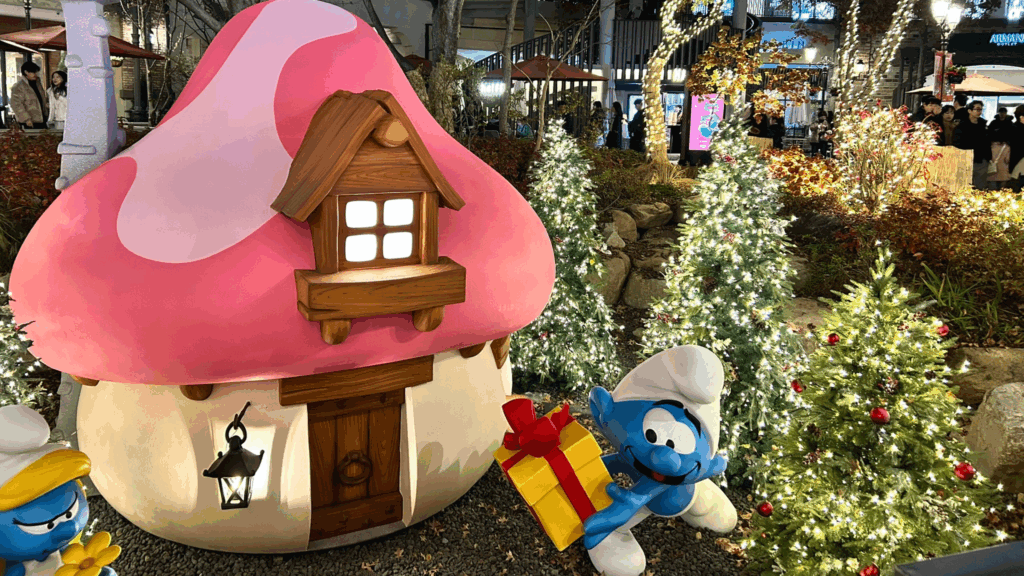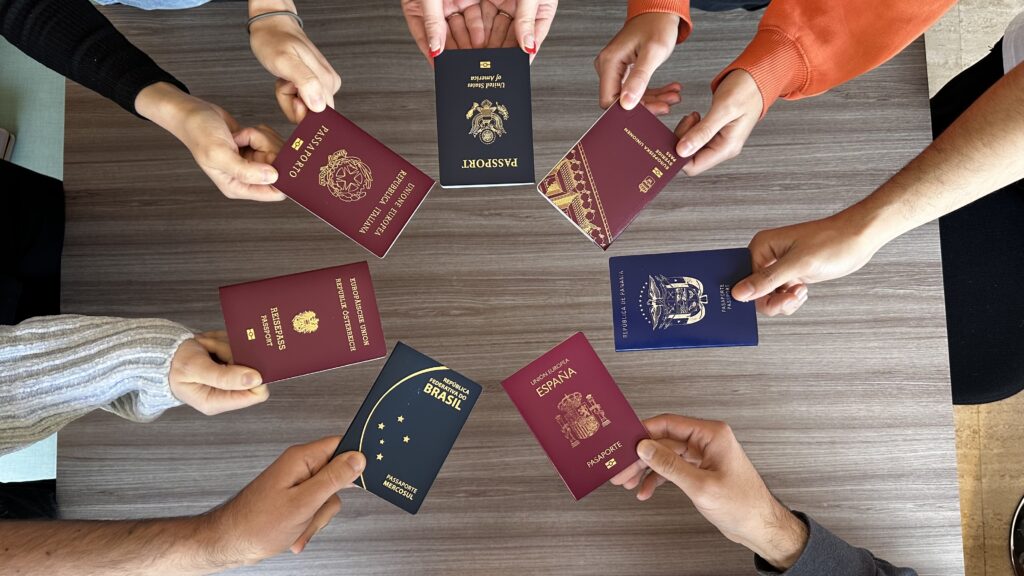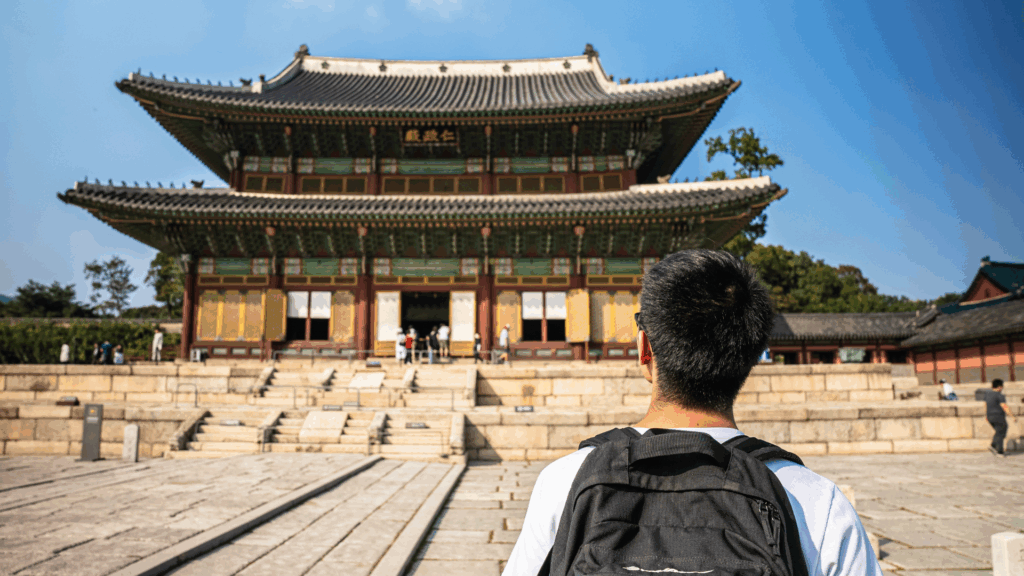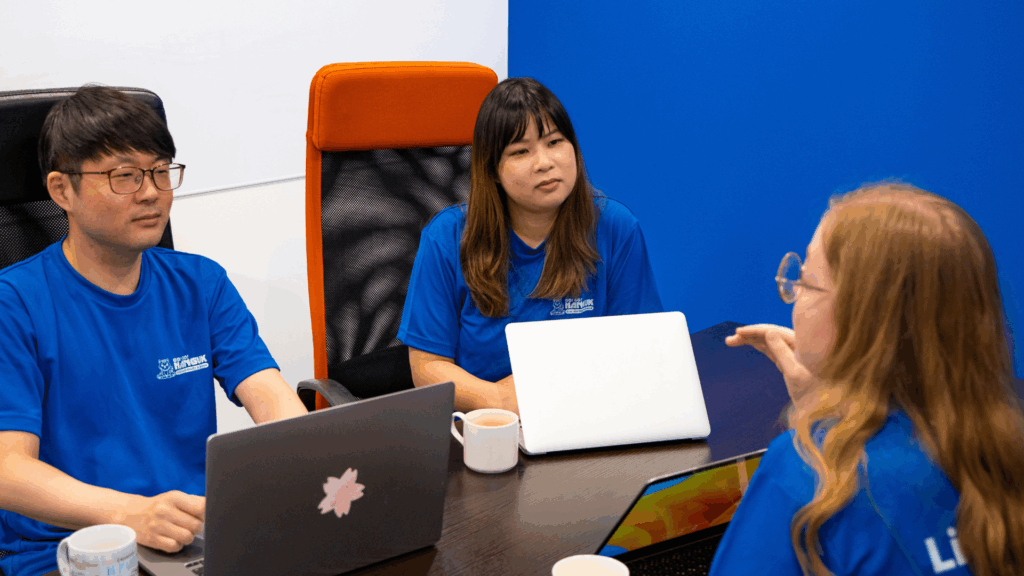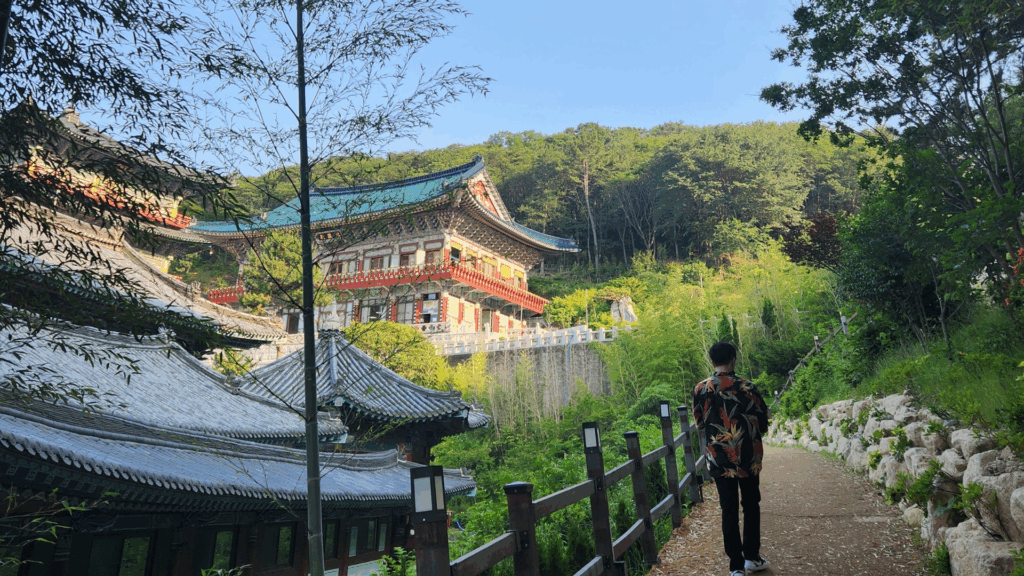Are you planning to live in Korea? Maybe for school, work, or just the K-drama lifestyle? One of the first things you’ll need is a place to stay. However, finding an apartment in Korea is not as straightforward as in many other countries. Korea has its own unique housing systems, terms, and platforms that might seem confusing at first, but don’t worry, we’ve got you covered. This article will walk you through everything you need to know about getting an apartment in Korea, with helpful vocabulary and platforms to help you on your search!
5 important tips when renting an apartment in Korea
1. Things to consider before renting an apartment in Korea
Before you start house hunting, ask yourself two main questions: How long are you staying? And what’s your budget? These two factors will guide every decision you make from choosing the right type of housing to picking between rent systems.
If you’re planning to stay short-term (less than a year), you’ll most likely go for a monthly rent (wolse) or a serviced residence like Airbnb. Long-term stays (over a year) offer more options, including jeonse, a unique Korean housing deposit system.
Budget is just as important. In Korea, rent prices can vary drastically based on location. Areas near universities, central Seoul, or transportation hubs usually cost more. Some places require a high deposit (like jeonse), while others allow smaller deposits with monthly rent.
Lastly, think about what’s essential for your comfort: Do you need a furnished place? Is an elevator a must? What about proximity to the subway? These preferences will help narrow down your choices when looking for an apartment in Korea.
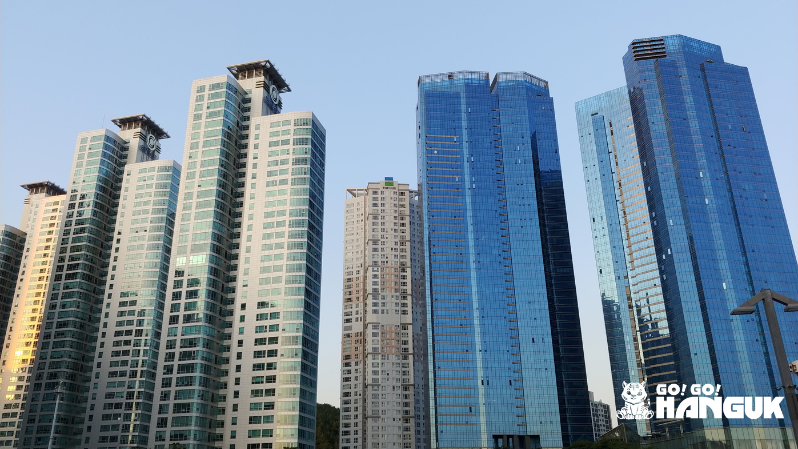
2. Jeonse vs. Wolse
You must be thinking, what is jeonse and wolse? Well, jeonse (전세), also referred to as key money lease, is when the tenant is required to deposit a huge amount of money upfront, which is usually around 50% to 80% of the property’s market value. The key feature of jeonse is that you don’t pay monthly rent, and the landlord returns the deposit at the end of the lease (usually 2 years). This system is ideal for long-term stays and people who have large savings and want to avoid monthly payments.
The pros of jeonse are that there is no need for monthly rent, it is more stable for long-term stay, and legal protection for deposits. On the contrary, it involves a high initial deposit, less flexibility, and is harder for foreigners without Korean co-signers to get a lease.
Wolse (월세) is more like traditional renting, where you pay a smaller deposit (often KRW 5–10 million) and monthly rent (typically between KRW 300,000 to KRW 1 million, depending on the area and property). This is a better option for students, short-term workers, or people without a large deposit.
The best part of wolse is a lower upfront cost, more flexible lease terms, and suitability for short stays, while the cons require monthly payments and total cost may be higher over time.
Both systems have their place in Korea’s housing market, and depending on your situation, either can work well for finding an apartment in Korea.
Korea’s housing system is different from many Western countries. The two main rental options are jeonse (전세) and wolse (월세), and knowing which one suits you better depends on your stay length and budget.
3. Types of housing options in Korea
When you start looking for an apartment in Korea, you’ll discover a variety of housing styles, each with its own pros and cons. One popular option is the officetel (오피스텔), a hybrid between an office and a hotel-style apartment. These are often furnished, located in central areas, and are ideal for working professionals or students. Another common choice is the one-room (원룸), a compact studio apartment with a bathroom, mini kitchen, and sleeping area all in one space. It’s perfect for solo living and tends to be more budget-friendly.
If you need more space, two-room or three-room units are available and better suited for couples, small families, or friends who want to share an apartment. These typically offer separate bedrooms and living areas. For those looking for more upscale living, apartments (아파트) in high-rise buildings are a great option. While they are more expensive, they often come with added perks like security systems, elevators, and parking spaces.
A more affordable alternative is the villa (빌라), which is a low-rise building with multiple units. While they cost less, you’ll want to be cautious as some villas may lack good soundproofing, natural light, or modern facilities. For ultra-budget living, especially among students or short-term residents, there’s the goshiwon (고시원). These tiny rooms are cheap and include basic essentials, but they offer very limited space and privacy.
In addition to goshiwon, it’s also worth looking into share houses, where you share common areas like the kitchen and living room with other tenants while still having your own private space. They’re great for making new friends and easing into life in Korea. Go! Go! Hanguk can assist Korean language students specifically with options like goshiwon and share houses.
Still can’t decide? Check out our article on student accommodation in Korea to see which option is right for you!
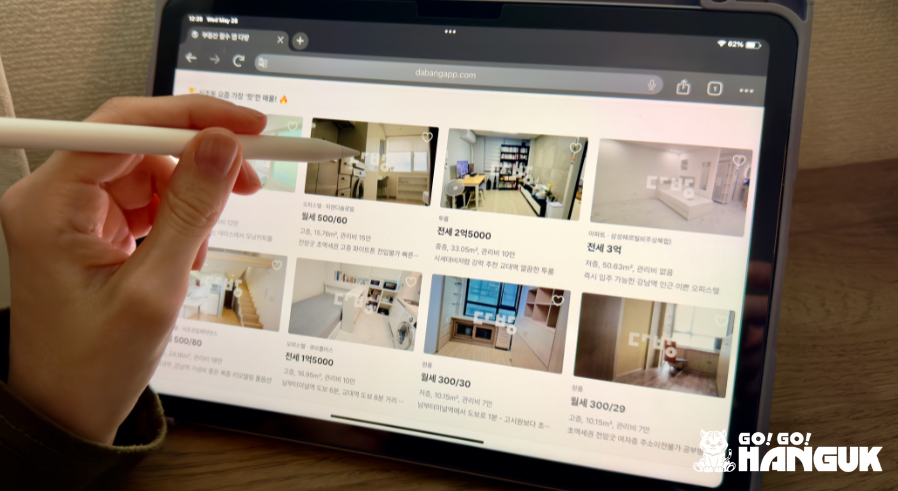
4. Where to find an apartment in Korea
Gone are the days when you had to wander through neighborhoods searching for “for rent” signs. These days, finding an apartment in Korea is easier than ever, thanks to a variety of apps and websites that simplify the entire process, even if your Korean skills are still a work in progress.
One of the most popular platforms is Dabang (다방), known for its user-friendly interface and helpful features. It offers plenty of photos, layout previews, and filter options, and you can even view listings on a map to find apartments near subway stations. Jikbang (직방) is another similar platform that’s mobile-friendly and provides detailed listings, making it a great choice when browsing for a modern apartment in Korea.
If you want the most comprehensive listings, Naver Real Estate (Naver 부동산) is the go-to site. It’s entirely in Korean, but it has the most up-to-date listings and a wide variety of housing types. For short-term stays, Airbnb is a popular option. Many hosts offer monthly discounts tailored for students, travelers, or digital nomads, making it a great way to test out living in an apartment in Korea before making a long-term commitment.
Craigslist Korea is another useful platform, especially among expats. While listings are fewer, they’re often in English, which can be helpful for newcomers. Just be cautious of scams and always visit the place in person before signing anything. Real estate agents and private renters frequently post available properties there.
For more personalized help, consider working with a budongsan (부동산), also known as a property agency. Many of them are bilingual and experienced in helping foreigners navigate the process of renting an apartment in Korea with ease.
Just be aware that before signing any lease, it’s essential to inspect the place carefully. Make sure appliances are working, the water supply is clean, the heating system (usually a boiler) functions well, and there’s no mold, especially in older buildings. It’s also smart to have a Korean-speaking friend help you review the contract when renting an apartment in Korea.
5. Useful Korean vocabulary for apartment hunting
If you’re apartment-hunting in Korea, knowing a few key Korean phrases can go a long way. Whether you’re navigating websites or talking to agents, here’s some helpful lingo:
- Wolse (월세): Monthly rent
- Jeonse (전세): Key money lease
- Bojeunggeum (보증금): Deposit
- Gwanlibi (관리비): Maintenance fee
- One room (원룸): Studio apartment
- Officetel (오피스텔): Office-apartment (hybrid)
- Bang (방): Room
- Budongsan (부동산): Real estate agency
- Gyeyakseo (계약서): Contract
- Cheung (층): Floor
These phrases could come in handy too, try asking:
- Bojeunggeumeun eolmayeyo? (보증금은 얼마예요?): How much is the deposit?
- Gwanlibi poham ingayo? (관리비 포함인가요?): Is the maintenance fee included?
- Ipjuireun eonjeyeyo? (입주일은 언제예요?): When is the move-in date?
If you’re a Korean language student, we can support you in finding the right type of accommodation. Learn more and explore your options on our accommodation page. We hope that this guide comes in handy when you are renting an apartment in Korea.
For more information on the Korean language and culture, keep following the Go! Go! Hanguk blog, and don’t hesitate to contact us about living and studying in Korea.

